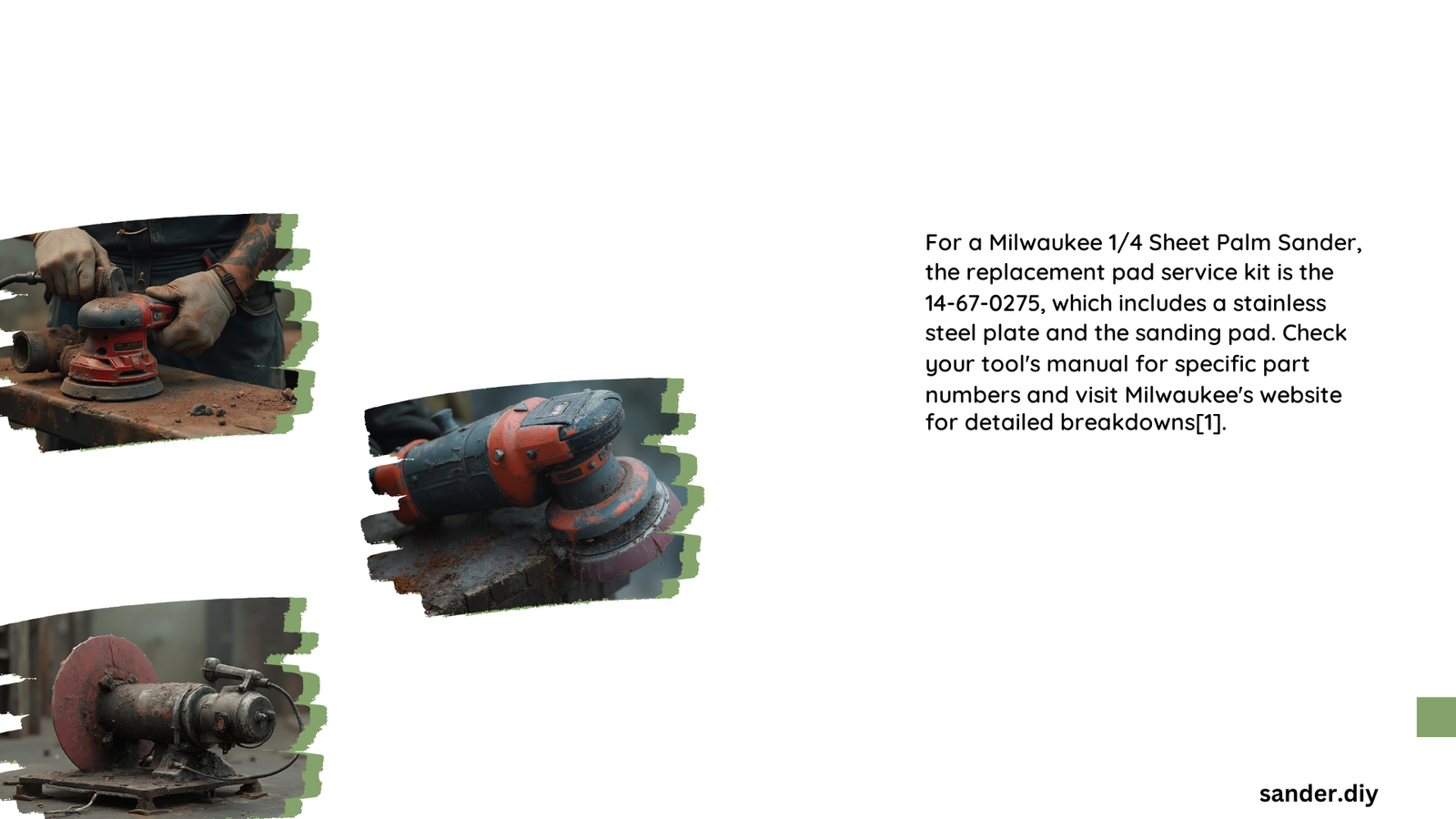Milwaukee palm sander pad replacement is a crucial maintenance task for ensuring optimal performance and longevity of your sanding tool. This process involves removing the worn-out pad and installing a new one, which is compatible with your specific Milwaukee sander model. Proper replacement not only enhances the sanding efficiency but also prolongs the life of your tool. This guide will walk you through the dimensions, types, installation process, and compatibility of Milwaukee palm sander pads.
What Are the Specific Dimensions of Milwaukee Palm Sander Pads?
Understanding the dimensions of your Milwaukee palm sander pad is essential for proper replacement. Here are the specific measurements for the Milwaukee M12 Orbital Detail Sander pad:
- Length: 3.5 inches
- Width: 2.6 inches
- Height: 0.4 inches
- Weight: 0.08 lbs
These dimensions ensure a perfect fit for the Milwaukee M12 Orbital Detail Sander, allowing for precise sanding in tight corners and detailed work.
What Types of Milwaukee Palm Sander Pads Are Available?

Milwaukee offers various types of palm sander pads designed for different applications and sander models. Let’s explore the key features:
Material Composition and Design
- Bend-resistant design for durability
- Premium hook and loop backing for secure attachment
- Primarily made of plastic for lightweight operation
Compatibility and Applications
- Exclusively compatible with Milwaukee POWERGRID Mesh Sanding Sheets
- Unique shape with sharp, straight edges for accuracy in tight corners
- Ideal for woodworking, remodeling, and finishing tasks
Grit Options
While the pads themselves don’t have a grit, they are designed to work with Milwaukee Mesh Sanding Sheets available in various grits. This allows for versatility in sanding applications, from rough material removal to fine finishing.
How to Replace a Milwaukee Palm Sander Pad?
Replacing your Milwaukee palm sander pad is a straightforward process that doesn’t require any special tools. Follow these steps for a successful replacement:
- Remove the Old Pad:
- Gently pull the old sanding pad away from the sander base
-
The hook and loop backing allows for easy removal
-
Inspect and Clean the Sander:
- Ensure the sander’s surface is free of dust and debris
-
This step is crucial for a secure fit of the new pad
-
Attach the New Pad:
- Align the new sanding pad with the sander base
-
Press firmly to secure the hook and loop backing
-
Test the Fit:
- Lightly tug on the new pad to confirm secure attachment
- Ensure even alignment for optimal sanding performance
Tips for Successful Pad Replacement
- Clean both the sander base and new pad thoroughly before installation
- Apply even pressure when attaching the new pad to avoid misalignment
- Check for secure attachment before use to prevent the pad from coming loose during operation
What Are the Compatibility Issues with Different Milwaukee Sander Models?
Understanding compatibility is crucial when replacing your Milwaukee palm sander pad. Here’s a comparison of pad compatibility across different models:
Milwaukee M12 FUEL™ Orbital Detail Sander (2531-20)
- Compatible Pad: Milwaukee 49-36-2531 M12 Orbital Detail Sander Pad
- Features: Bend-resistant design, premium hook and loop backing
- Dimensions: 3.5 x 2.6 x 0.4 inches
Milwaukee M12 FUEL™ 3\” Random Orbital Detail Sander (2535-20)
- Compatible Pad: 3\” Random Orbital Detail Sander Pad
- Features: Similar bend-resistant design and premium hook and loop backing
- Dimensions: 3 x 3 x 0.5 inches
It’s important to note that these pads are not interchangeable between models due to their different dimensions and designs. Always ensure you’re using the correct pad for your specific Milwaukee sander model to maintain optimal performance and avoid potential issues.
What Are Common Issues in Milwaukee Palm Sander Pad Replacement?
While Milwaukee palm sander pad replacement is generally straightforward, users may encounter some challenges:
- Misalignment:
- Problem: Improper alignment can lead to uneven sanding and reduced efficiency
-
Solution: Carefully align the new pad with the sander base before pressing it into place
-
Loose Attachment:
- Problem: Inadequate pressure during installation can result in a loose pad
-
Solution: Apply firm, even pressure across the entire pad surface when attaching
-
Debris Interference:
- Problem: Dust or debris can prevent secure attachment
-
Solution: Thoroughly clean both the sander base and new pad before installation
-
Incompatible Pad Selection:
- Problem: Using the wrong pad model can lead to poor fit and performance
- Solution: Always verify the correct pad model for your specific Milwaukee sander
By being aware of these potential issues and following the proper installation steps, you can ensure a successful Milwaukee palm sander pad replacement and maintain the optimal performance of your tool.
How Often Should You Replace Your Milwaukee Palm Sander Pad?
The frequency of Milwaukee palm sander pad replacement depends on several factors:
- Usage Intensity: Heavy use requires more frequent replacement
- Material Being Sanded: Harder materials may wear pads faster
- Pad Quality: Higher quality pads generally last longer
- Visible Wear: Replace when you notice reduced sanding efficiency or visible damage
As a general guideline, consider these replacement intervals:
| Usage Level | Replacement Frequency |
|---|---|
| Light | Every 6-12 months |
| Moderate | Every 3-6 months |
| Heavy | Every 1-3 months |
Always inspect your pad before each use and replace it if you notice any signs of wear or damage to maintain optimal sanding performance.
By following this comprehensive guide, you can ensure proper Milwaukee palm sander pad replacement, extending the life of your tool and maintaining its efficiency for all your sanding projects.
References:
1. Adam’s Star PNT Tool
2. Great Lakes Power Tools
3. Milwaukee Tool
